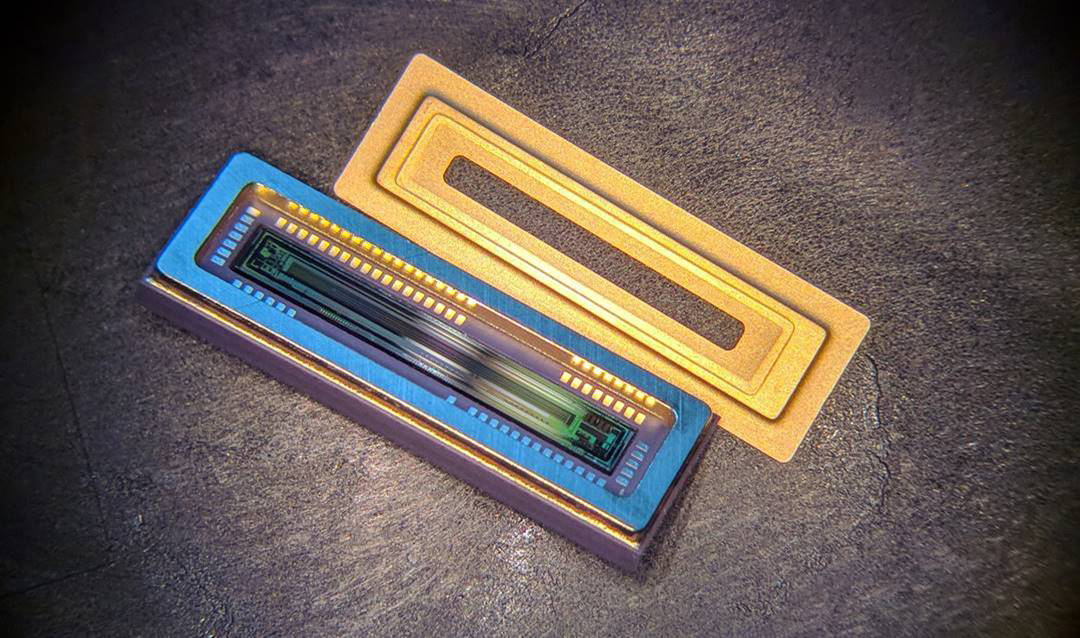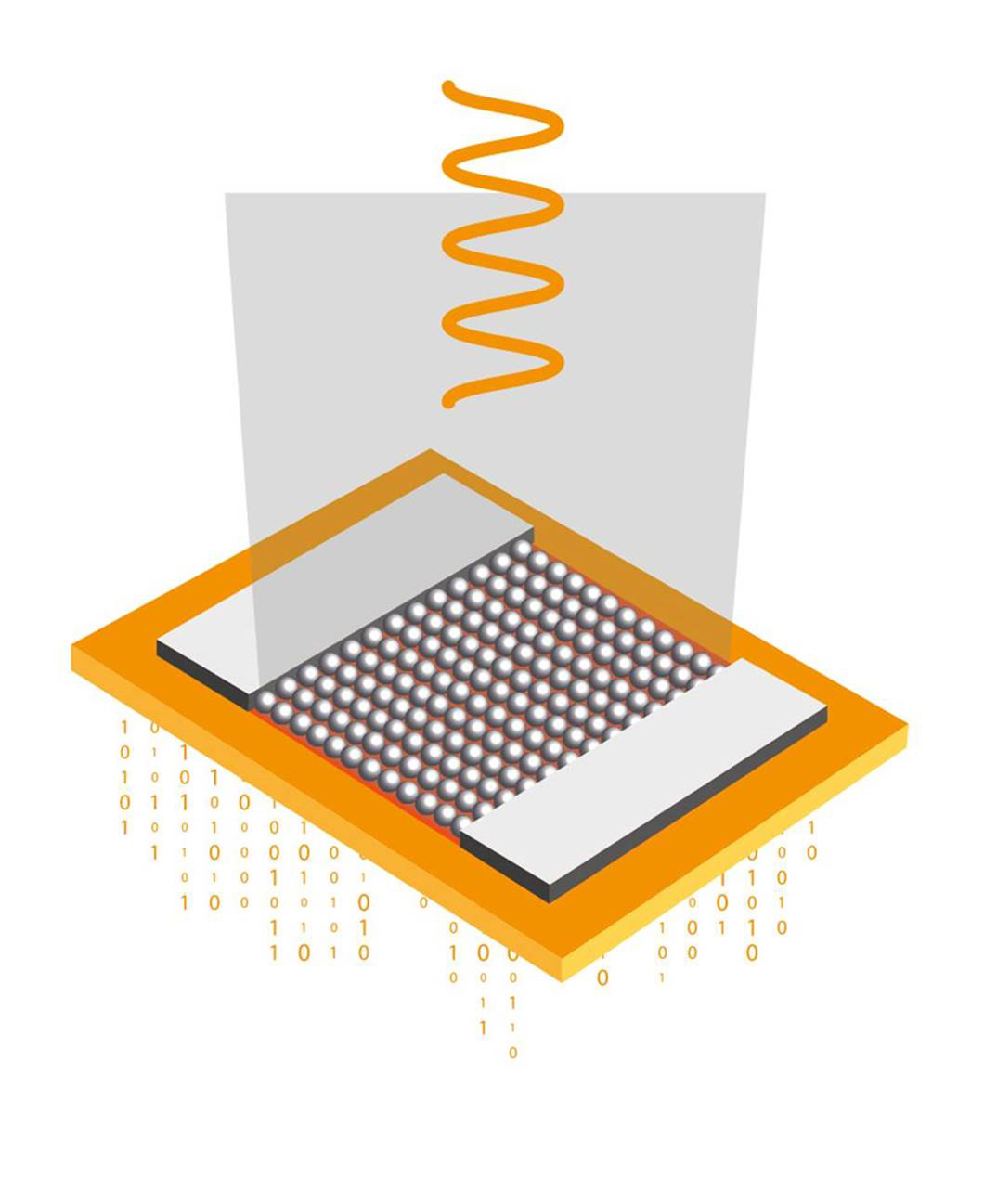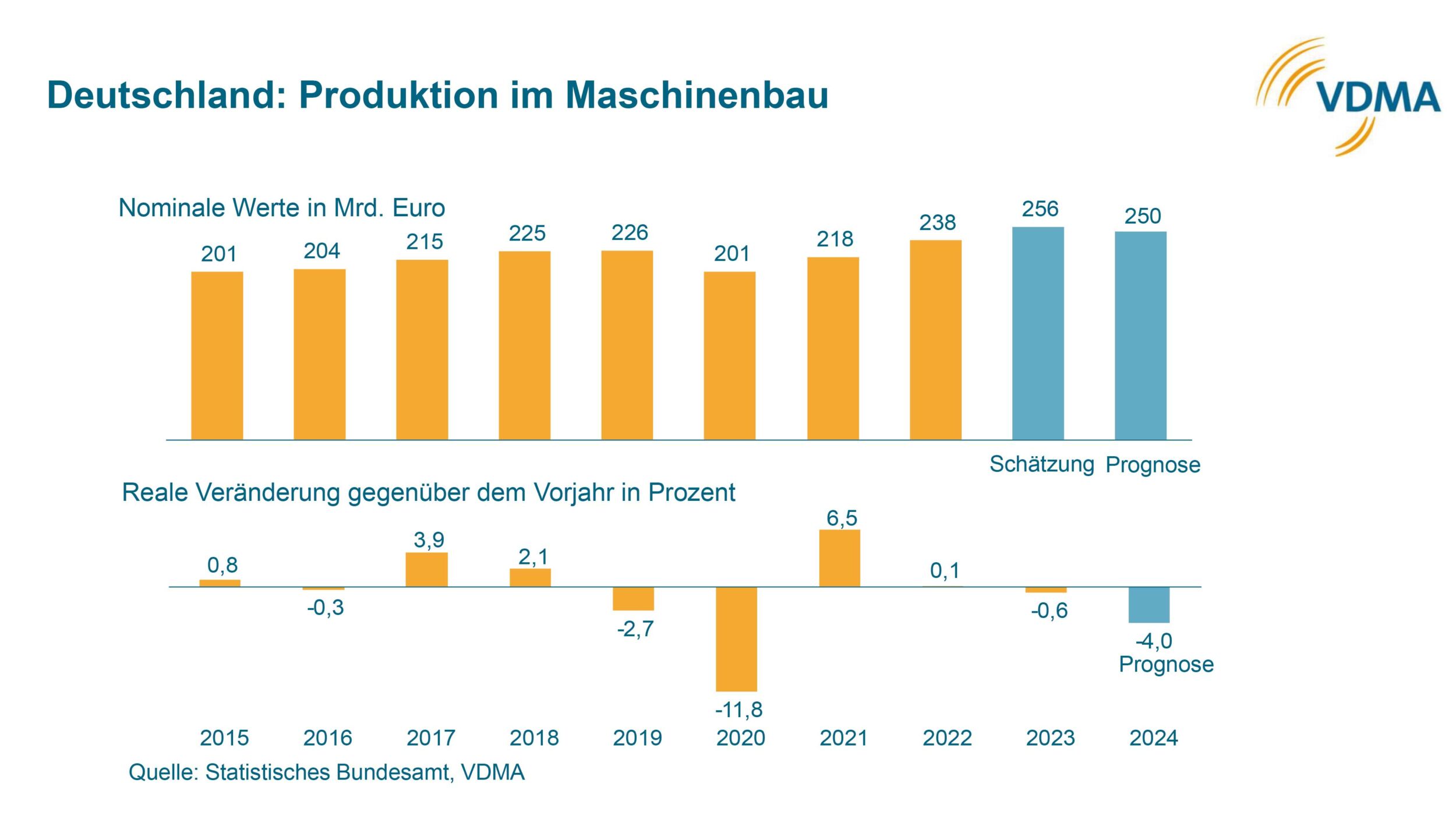Game Changing
Novel VIS-SWIR Sensors for Vision and Spectroscopy
Affordable VIS-SWIR sensors — based on nanotechnologies — that will enable the use of SWIR wavelength in a much wider extent in industrial applications than with technologies available today is the aim of Emberion.

Figure 1 | The first 512 pixel VIS-SWIR linear array sensor product with a 16bit digital output. (Image: Emberion Oy)
A novel sensor technology which combines light absorbing nanomaterials and graphene transducers enables photodetection in a wide spectral range spanning from visible (VIS) to short-wave infrared (SWIR) wavelengths. Emberion – a SME company established in 2016 as a spin-out from Nokia and based in Espoo Finland and Cambridge UK – is commercializing this technology and the first product will be introduced to the markets later this year. The company has developed sensor device structures, materials, and manufacturing methods for their fabrication directly on standard CMOS wafers. This allows monolithic integration of sensor arrays and readout integrated circuitry (ROIC). The in-house designed ROIC ensures the optimal operation of the photodetectors and performs low-level signal processing. This is a major advantage compared to the competing semiconductor heterosubstrate-based transducers, such as InGaAs-photodiodes. The composition and structures of the light absorbing materials, colloidal quantum dots, is primarily designed to offer consistent performance across the full spectral response range but it can be tailored to meet specific application-dependent response curve requirements. The new technology is not limited only to VIS-SWIR spectral range. The longer-term product development activities cover the thermal band of the spectrum, both MWIR and LWIR wavelengths. In terms of market readiness, MWIR and LWIR sensor technologies will follow VIS-SWIR sensor technology. These graphene-based sensor technologies are to be combined into a focal plane array which will cover the entire VIS-SWIR-LWIR spectrum.
Performance
The key features of the graphene-based VIS-SWIR sensor technology are the wide spectral response range, excellent sensitivity and noise performance, and large dynamic operation range. The spectral response range starts from 400nm and extends initially up to 1,800nm, in the future extending to even longer wavelengths. The properties of graphene, namely the high mobility of the charge carriers and the maximal surface to volume ratio of a 2D material, result into a low noise, high internal gain and non-saturating response behavior. The linear and full dynamic operation ranges are 60 and 120dB, respectively. The light absorbing materials pose a trade-off between the operation speed and sensitivity. Currently, the frame rate is limited to 100fps but is expected to increase in future products. In respect to Specific Detectivity (D*) and Noise Equivalent Irradiance (NEI) performance, these novel sensors are on par with InGaAs photodiodes in SWIR and outperform them in VIS spectral domain at 30fps operation speed. The graphene-based sensors can be operated in room temperature but the optimal performance is achieved with a one-stage Peltier cooling element. The sensors will offer cost-wise an attractive alternative to InGaAs sensors. Therefore, this new sensor technology will allow product concepts and applications which have previously been prohibited by the high cost of SWIR sensors and which require a wider spectral response range.

Figure 2 | Simplified illustration of VIS-SWIR graphene-based photodetector which combines light absorbing nanomaterials and graphene transducers to enable photodetection in a wide spectral range. (Image: Emberion Oy)
Products
The first commercial product utilizing this technology is a 512×1 linear array sensor with a 16bit digital output. The pixel geometry (25×500µm) follows the conventional requirements of the spectrometer systems. The VIS-SWIR linear array sensor will be available in September 2019. The linear array will be followed by a VGA (512×640) image sensor product available in spring 2020. The image sensor has versatile applications, e.g. in machine/night vision and hyperspectral imaging. Both sensors will be offered with a measurement module which can be utilized for technology evaluation purposes or as a reference implementation for customers‘ product integration. Emerging and existing machine vision and spectroscopy applications rely on the availability of high-performance sensor technologies. Photodetectors‘ wide spectral response range and capability to detect even the weakest optical signals ensure that no important spectral features will be missed, which leads into improvements in detection and recognition accuracies. Lowering the price of the wide-spectrum sensors is crucial for the wider deployment of the technologies, in particular in portable and in-field applications.












